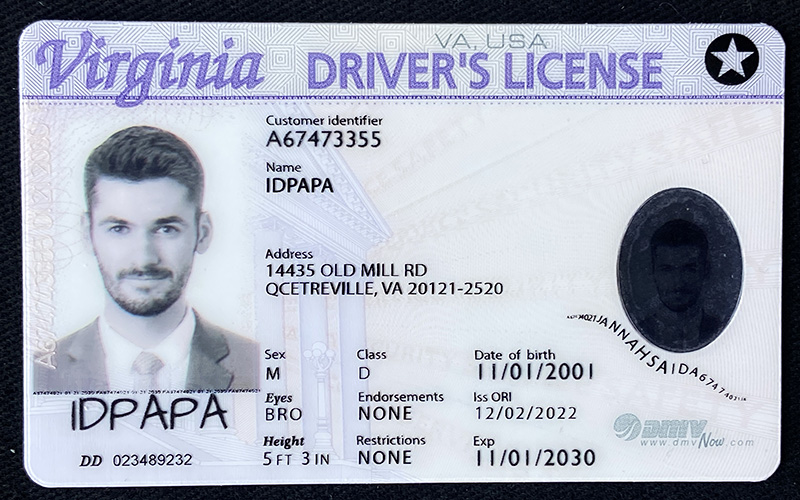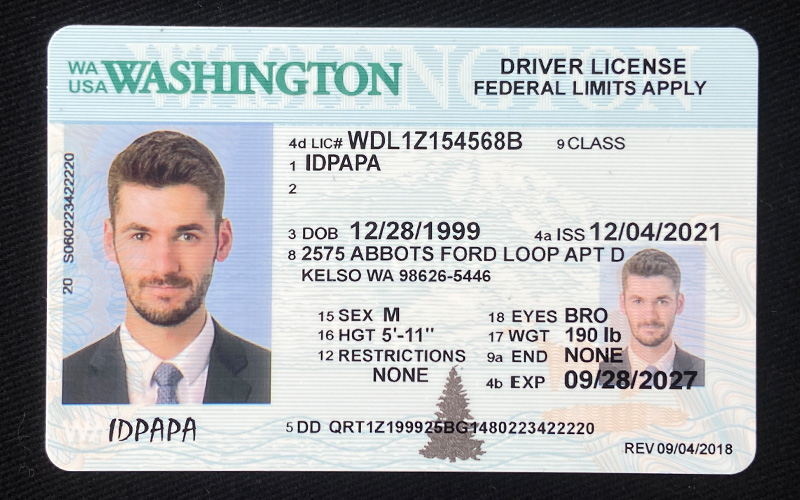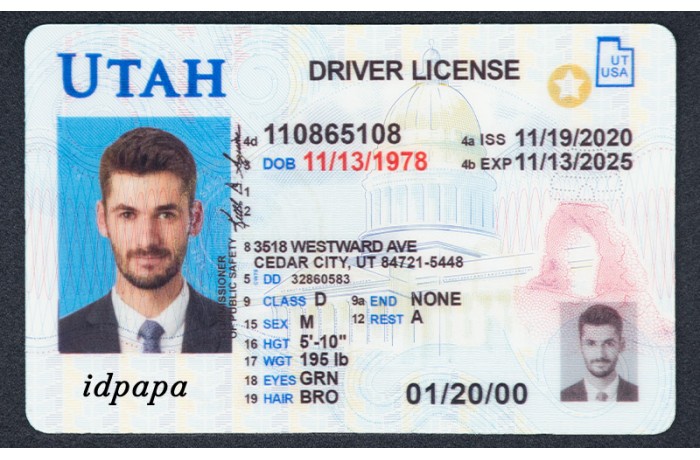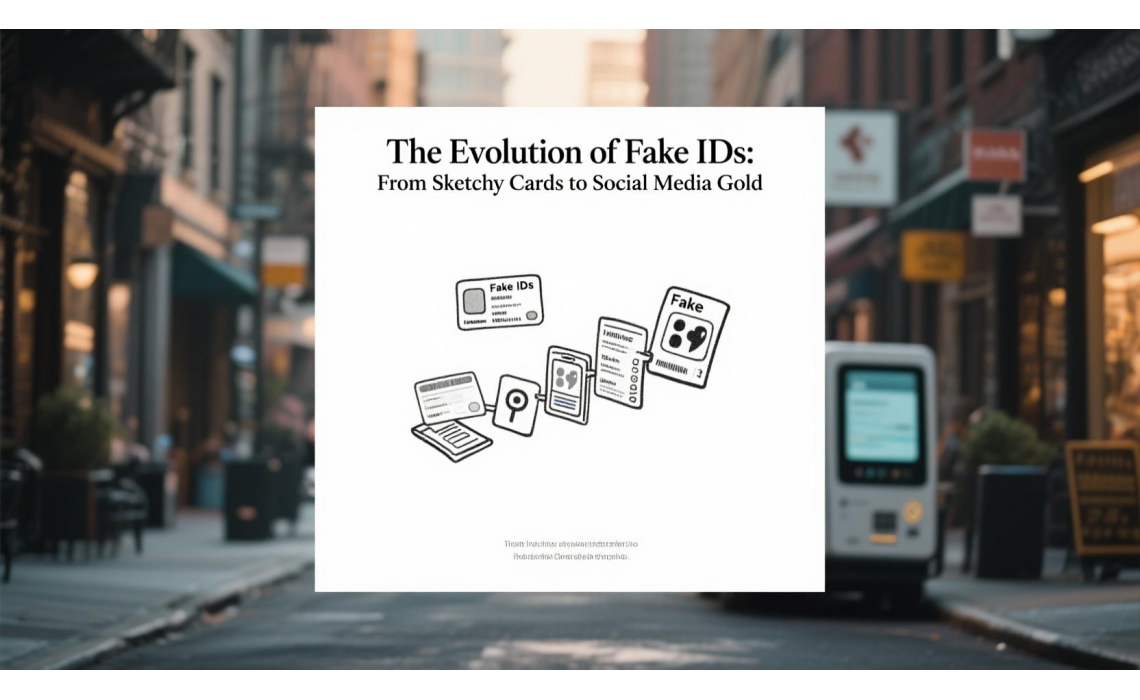The Evolution of Fake IDs: From Sketchy Cards to Social Media Gold
The Evolution of Fake IDs: From Sketchy Cards to Social Media Gold

For decades, they were the stuff of rebellious teenagers, late-night college stunts, and shady backroom deals. They were associated with dimly lit nightclubs, underage beer runs, and anxiety-ridden fake ID orders and encounters with bouncers who could spot a bad laminate from across the room.
Fast forward to 2025—and fake IDs have undergone a complete transformation. They’re no longer just tools for bypassing age restrictions. They’ve become content, fashion, and identity expression. Today’s fake ID isn’t just trying to pass as a driver’s license—it’s trying to go viral. It’s a selfie prop, a party favor, a digital persona, and a conversation starter. In a world where personality is performance, fake IDs have become social media gold.
Let’s break down how we got here.
1. The Sketchy Origins: Lamination, Lies & Legal Risks
In the early days, fake IDs were purely functional and deeply illegal. They weren’t designed for fun or creativity; they were created with one purpose: to get around age restrictions, primarily for alcohol and club entry. College students, especially those under 21 in the U.S., sought them out as a rite of passage. These IDs were crude at best—often made with poor-quality printers, flimsy card stock, and cheap laminating sheets from office supply stores. You could spot one from a mile away thanks to a blurry photo, misaligned text, crooked font, or a state seal that looked like it was drawn in Microsoft Paint. They weren’t fooling anyone who looked twice, but for many, they were better than nothing.
Getting one was a shady operation in itself. You didn’t just go online and place an order like you do today. You had to “know someone who knows someone.” That meant whispered referrals in dorms, passed notes in class, and sketchy meetups behind convenience stores or in student lounges. Sometimes you’d send cash or wire money via Western Union to a stranger whose real name you didn’t know. The waiting game was full of anxiety—Would it arrive? Would it look okay? Did I just get scammed? When the ID finally came, it was either a crude disappointment or a semi-believable card that might get you through one or two doorways—if the bouncer was in a good mood. Even holding it in your wallet made some students nervous.
Using a fake ID back then was nerve-wracking. Every interaction with a bartender, club doorman, or liquor store clerk felt like a gamble. You had to put on a confident face and pray they wouldn’t scrutinize it. Getting caught wasn’t a slap on the wrist—it could mean confiscation, a call to campus police, school suspension, or even a criminal record. There were stories of students being expelled or having their futures derailed over a fake piece of plastic. These early IDs were dangerous, unreliable, and not Instagrammable. There was no style, no humor, no content opportunity—just fear, function, and a whole lot of risk.
2. The Internet Era: Smarter Sellers, Smarter Buyers
The early 2010s saw fake ID vendors moving online, ushering in a new chapter of accessibility, efficiency, and sophistication. No longer did students have to rely on sketchy intermediaries or word-of-mouth dealers. Suddenly, entire websites were dedicated to the process—sites like IDGod and IDTop led the charge. They offered sleek, encrypted platforms where buyers could upload photos, select their state or country, and place an order within minutes. Payments shifted toward cryptocurrency, particularly Bitcoin, offering anonymity and protection on both sides of the transaction. These vendors invested in high-resolution printers, microprint technology, and lamination machines that dramatically improved the look and feel of the cards.
The impact was immediate: fake IDs started to look incredibly real. Holograms shone correctly under UV lights. Barcodes and magnetic strips passed scanner tests at gas stations and bars. Fonts were sharp, color gradients matched official state formats, and even signature lines looked authentic. For the first time, users didn’t just hope their ID might work—they expected it to. People started sharing their experiences, leaving reviews, and—perhaps most tellingly—uploading unboxing videos. What was once a private and fearful act became a display of success and sophistication. Social media platforms like Reddit and Snapchat saw an influx of “rate my fake” posts and how-to threads, further legitimizing the subculture.
Still, the goal remained largely the same: to sneak past security, buy alcohol, or enter age-restricted venues. But with the rise of internet communities came something new: visibility. The process of ordering, customizing, and showing off your fake ID was now part of a shared online experience. It wasn’t just about bypassing age limits—it was about being part of a secret club of people who knew where to buy, how to pose, and how to avoid getting caught. And that visibility created new avenues for how people thought about fake IDs—not just as tools for deception, but as expressions of tech-savviness, style, and identity.
And slowly but surely, that shift in perception led to the emergence of something unexpected: novelty culture. A growing number of users weren’t interested in faking their age at all. They ordered IDs with ridiculous names, fictional roles, or sci-fi-inspired designs. They didn’t want to fool a bouncer—they wanted to make their friends laugh, spice up a TikTok skit, or uniquely brand themselves. Instead of realism, they wanted creativity. Instead of fear, they wanted fun. The internet had cracked open the door, and people began walking through it with a whole new purpose.
3. The Rise of Novelty & Identity Play
By the late 2010s, a new wave began to rise—and it had nothing to do with sneaking past age gates or fooling authority figures. People weren’t buying fake IDs to deceive anymore. They were buying them to express themselves. As personalization and self-branding became core parts of digital life, especially on social media platforms, the novelty IDs blog found a new purpose. These IDs evolved into badges of personality, a playful extension of who someone was—or wanted to be. They weren’t about fake identities for access; they were about funny, exaggerated truths that made people stand out, get laughs, and create memorable moments.
At office parties, someone might walk in proudly wearing a lanyard with “Chief Meme Officer” printed on it, instantly becoming the unofficial entertainer for the evening. Weddings saw bridal parties donning badges like “Emotional Support Bridesmaid,” “Groom Squad Logistics Manager,” or “Vibe Curator”—transforming pre-ceremony chaos into a hilarious bonding experience. On TikTok and YouTube, content creators began using novelty IDs as on-screen introductions: “Head of Chaos,” “Certified Overthinker,” or “CEO of Regret” instantly told viewers what to expect, adding humor and character in just a few words. These IDs weren't trying to mimic reality—they were trying to amplify identity through irony, wit, and creative exaggeration.
Recognizing this massive shift, sites like IDPapa jumped ahead of the trend and built platforms tailored for this new type of demand. IDPapa introduced fake ID generators that didn’t just replicate driver’s licenses but empowered users to fully customize their design, from fonts and layout to photos and punchy job titles. The process became quick, intuitive, and, most importantly, completely legal. Users could experiment with identities, invent alter egos, and gift each other hilarious titles, all with a few clicks. The goal wasn’t deception—it was to be remembered, laughed at, and shared. Whether printed and worn to an event or posted as part of a content strategy, these novelty IDs offered a unique way for people to showcase who they are in the most fun, unexpected way possible.

4. Social Media Turns Fake IDs Into Virality Machines
In 2025, fake IDs are a flex. They’re no longer hidden in wallets—they’re framed in dorm rooms, shown off on TikTok, and posted in Instagram stories.
Creators use them to:
●Introduce alter-egos in videos
●Create fake credentials for characters or skits
●Design hilarious nameplates for Zoom meetings or Discord calls
●Customize party favors that double as inside jokes
Suddenly, the fake ID isn’t about who you can pretend to be legally—it’s about what story you want to tell today. And every story is a chance to go viral.
People aren’t scared to post them—they want people to see them. Because the titles, the backstories, and the creativity spark engagement. “Where did you get that?” “Can I make one too?” “OMG I’m stealing this idea!”
5. The Future: Creative Tools, NFT IDs & Identity as Art
With tools like IDPapa offering real-time customization, instant downloads, and even AI-generated title suggestions, the next generation of fake IDs is interactive, funny, and legally safe.
In fact, we’re already seeing:
●NFT fake IDs that serve as collectibles
●Augmented Reality (AR) badges for virtual events
●Fake ID bundles in subscription boxes
●Limited edition templates tied to influencers or trends
The more digital our lives become, the more we crave tangible identity markers—even if they’re playful and fake. Just like fashion, usernames, and bios, fake IDs are now part of how we brand ourselves in the world.

 Final Thoughts: Fake IDs Aren’t Just Fake Anymore
Final Thoughts: Fake IDs Aren’t Just Fake Anymore
They’re storytelling devices. They’re conversation starters. They’re tiny pieces of portable personality that you can flash, share, or frame.
What used to be sketchy is now stylish. What used to be dangerous is now delightful. And what used to be about hiding your identity is now about highlighting it—with flair.
The fake ID has evolved. It’s not trying to get past the bouncer anymore.
It’s trying to get you likes.


